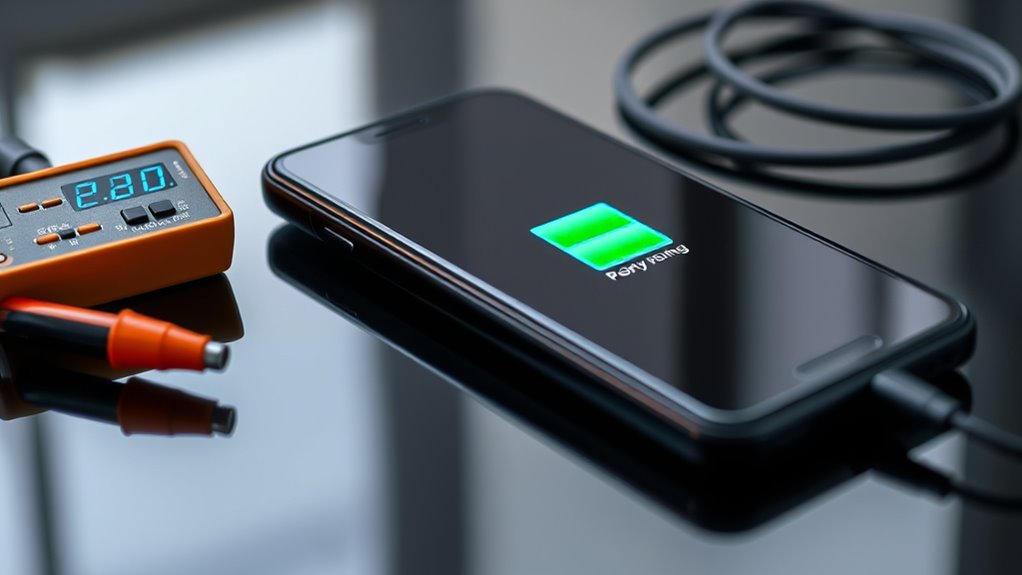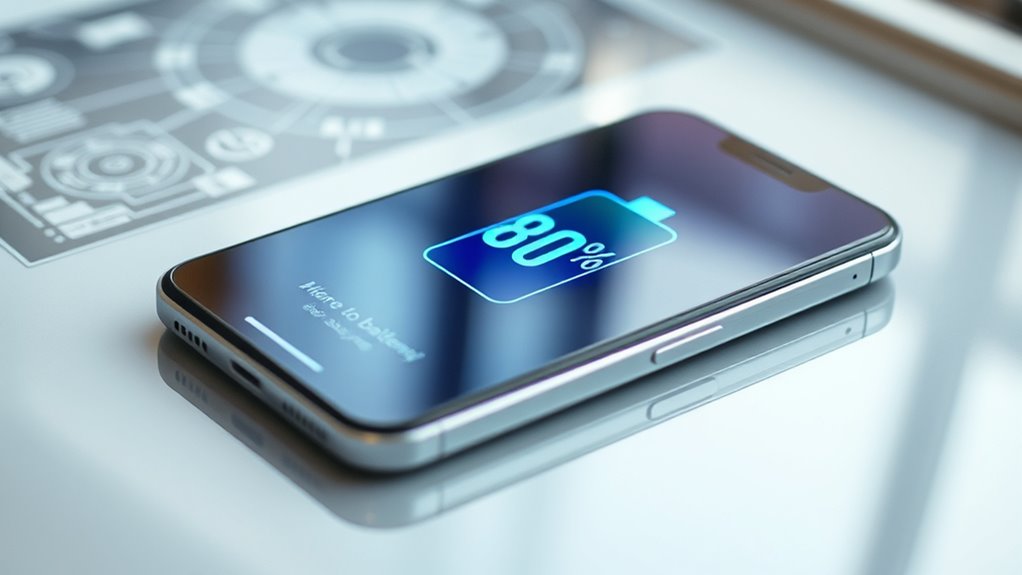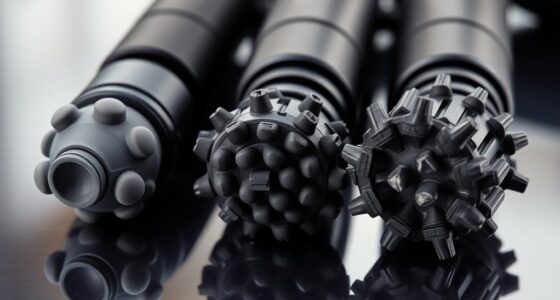Battery mAh, or milliampere-hour, measures how much energy a battery can store and deliver. It directly affects how long your device can run before needing a recharge. In simple terms, a higher mAh usually means longer usage time, but other factors like battery type and care also matter. Understanding this helps you choose the right battery or device for your needs. If you’re curious, there’s more to learn about how battery capacity impacts performance and lifespan.
Key Takeaways
- “mAh” stands for milliampere-hour, measuring a battery’s energy storage capacity.
- Higher mAh indicates a longer potential device runtime before recharging.
- Battery capacity in mAh reflects how much charge a battery can hold and deliver.
- Different battery types influence capacity, performance, and lifespan.
- Proper care and charging habits help preserve battery capacity over time.

Have you ever wondered what “mAh” means when looking at a battery’s specifications? “mAh,” which stands for milliampere-hour, is a unit that measures a battery’s capacity to store and deliver electrical charge. Essentially, it indicates how much energy a battery can hold and how long your device might run before needing a recharge. When you see a battery with a higher mAh rating, it generally means it can power your device for a longer period, assuming other factors stay the same.
Understanding battery capacity involves knowing about different battery types. Common types include lithium-ion, nickel-metal hydride, and lithium-polymer, each with distinct characteristics. Lithium-ion batteries are popular in smartphones and laptops because they offer high energy density and a relatively long lifespan. Nickel-metal hydride batteries are often found in older electronic devices and provide moderate capacity but tend to have more charging cycles before their capacity diminishes. Lithium-polymer batteries are similar to lithium-ion but are more flexible in shape and size, making them suitable for slim devices. The type of battery impacts not only the capacity measured in mAh but also how it performs over time and under various conditions.
Charging cycles play a notably role in a battery’s lifespan. A charging cycle refers to one complete charge and discharge of the battery. For example, if you use half of your battery’s capacity and then recharge it fully, that counts as half a cycle. Over time, each cycle causes some wear and tear, gradually reducing the battery’s ability to hold a full charge. Most batteries are rated for a certain number of charging cycles—say, 300 to 500—before their capacity drops considerably. This decline affects the effective mAh capacity you see advertised. A new battery might have a high mAh rating, but after hundreds of cycles, that capacity can diminish, leading to shorter usage times. Battery health maintenance is crucial for preserving capacity over time.
Knowing about battery types and charging cycles helps you better understand what to expect from your device’s battery life. A higher mAh rating doesn’t just mean longer use; it also depends on how you care for your battery. Proper charging habits, such as avoiding frequent deep discharges and not overcharging, can extend the lifespan of your battery, maintaining its capacity over many cycles. So, next time you look at a battery’s specs, keep in mind that mAh is a key indicator of capacity, but it’s also influenced by the type of battery and how you treat it across its charging cycles.
Frequently Asked Questions
How Does Mah Relate to Battery Life?
Higher mAh means your battery can store more energy, which generally leads to longer battery life. This improves your device’s battery longevity because it can run longer between charges. Additionally, a higher mAh contributes to better power density, meaning your device maintains consistent performance while conserving energy. So, when you see a larger mAh, it indicates your device will last longer and perform more reliably throughout the day.
Is Higher Mah Always Better?
Think of a battery like a vintage radio — higher mAh isn’t always better. While it can mean longer battery lifespan, it also depends on energy density, which affects how efficiently the battery stores power. A larger mAh rating might add weight or bulk, and if the device isn’t designed to handle it, performance could suffer. So, choose a battery that balances capacity with your device’s needs for ideal use.
Does Mah Affect Charging Time?
A higher mAh doesn’t directly affect charging time, but it can influence charging efficiency. Larger batteries with more capacity may take longer to charge fully, especially if the charger isn’t powerful enough. However, using a compatible fast charger can reduce charging time. Keep in mind, charging habits also impact battery longevity, so avoid overcharging or frequent full discharges to maintain *ideal* performance over time.
Can Mah Be Increased Without Changing the Battery?
Imagine your battery as a reservoir of energy, flowing to power your device. You can’t increase mAh without a battery upgrade, as capacity comparison shows it’s tied to the physical battery itself. To boost capacity, you’d need a new, higher-mAh battery. Without changing the battery, you can’t increase mAh; all attempts are like trying to stretch a dam’s capacity without adding more water—it’s simply not possible.
How Does Mah Impact Device Performance?
Higher mAh ratings generally mean longer device usage between charges, but your device’s performance also depends on battery chemistry and power efficiency. A battery with better chemistry can deliver stable power and last longer, while improved power efficiency reduces energy drain. So, a larger mAh battery can enhance performance by providing more capacity, but optimizing power efficiency and chemistry is key to truly maximizing your device’s performance and battery life.
Conclusion
Understanding what battery mAh means is like revealing the secret to its energy reservoir. It helps you gauge how long your device will run before needing a recharge. Think of it as the size of a fuel tank—bigger often means longer use. So, next time you’re shopping for a device, remember that a higher mAh isn’t just a number; it’s the heartbeat of your device’s endurance, keeping you powered up and ready to go.









